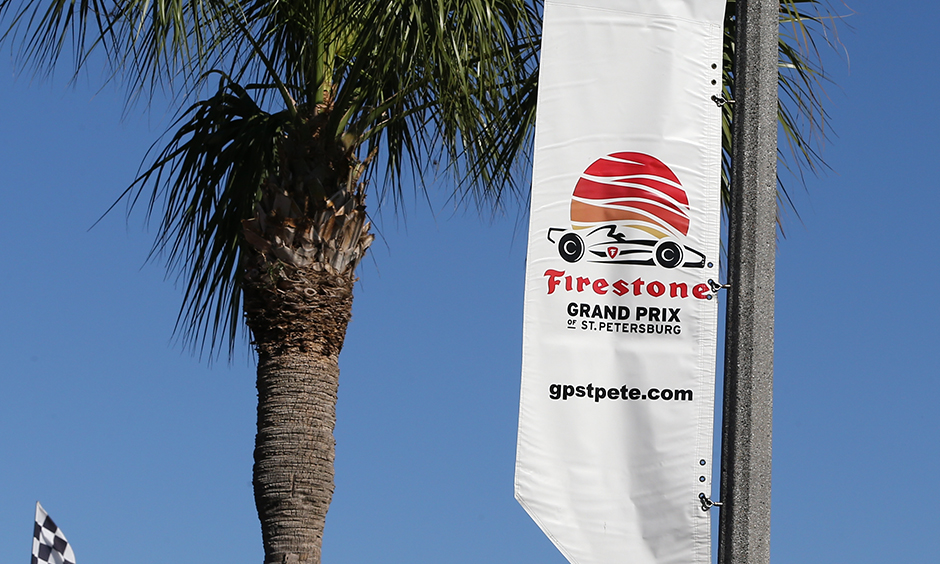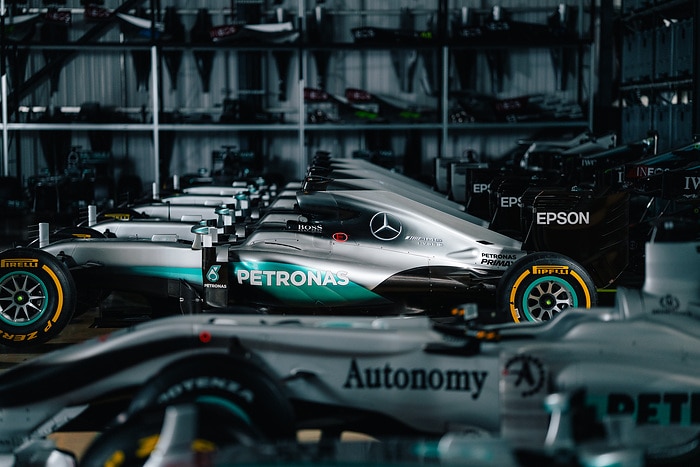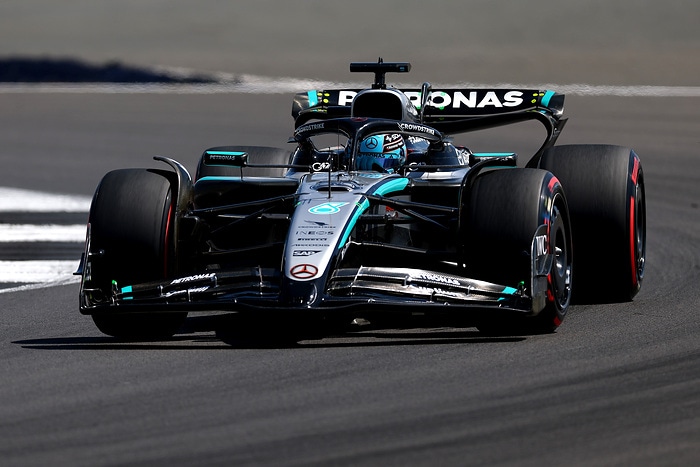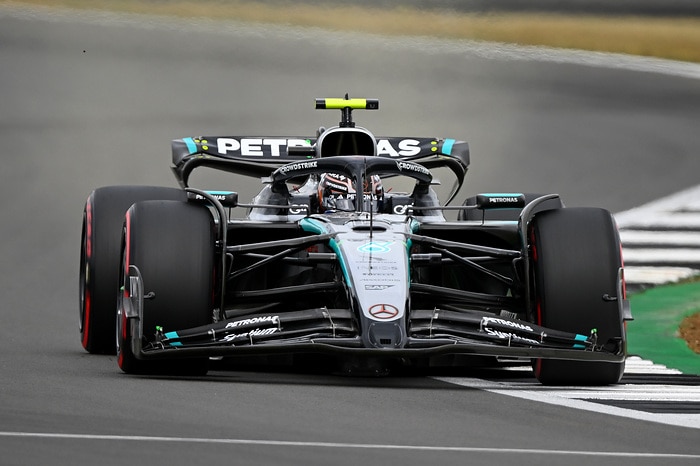St. Pete weekend will begin to answer 2018 INDYCAR questions

It looks sharp, accentuates the skills of drivers, and has been well received during offseason test sessions. But the unanswered question of this weekend’s season-opening Firestone Grand Prix of St. Petersburg is straightforward: How will it race?
The Verizon IndyCar Series debuts its new universal aero kit this weekend, and it couldn’t come at a more demanding venue. St. Pete’s downtown street circuit is narrow and difficult; its first turn, a challenging right-hander in which the entire field funnels from a wide airport runway to narrow city streets, is notorious for first-lap crashes.
So how will the new kit, with less downforce and grip, handle the tribulations of its first race? The answer will come Sunday.
“I think street courses will be the biggest change,” defending Verizon IndyCar Series champion Josef Newgarden of Team Penske said last month during a test a Phoenix. “… There’s a lot (that’s) going to be different. You have to look out for the cars differently, you have to drive the car different. I think we don’t know yet if that’s going to be better for racing.”
The kit, which is fitted to the existing Dallara IR-12 chassis, reduces downforce dramatically, making the car lighter in the rear end, which in turn makes it trickier to handle. The result in testing has been more sliding and busier drivers.
“It seems more nimble and more alive under your hands and feet,” Carlin’s Charlie Kimball said last week during a test at Sebring International Raceway. “On the short oval, the way it popped off the corner felt nice. That could create some serious passing opportunities if people have to lift on exit and get it wrong, especially as the tires wear.”
With reduced downforce comes less turbulence behind cars, a characteristic drivers appreciate.
“(With) the old car, you lost the rear,” Will Power said. “That made it really difficult to follow. Losing the front equally, but the turbulence is a lot less, I feel like.”
While teams and drivers focused on some of the challenges provided by the drastic changes — notably braking and grip — the new kit received positive responses for its appearance. Gone is the large hump over the engine and pods behind the rear wheels. The result is a lower, sleeker look.
“The car looks like a proper Indy car should,” team co-owner Bobby Rahal said. “Very good lines on it. It looks modern; it looks purposeful. There’s not stuff stuck on it to try to make it do something it can’t do. I hate to say it’s a throwback, because it’s not. It’s a modern-day race car. But the shape of it is such, the kind of shape that drew people to Indy car racing in the first place.”
When INDYCAR President of Competition and Operations Jay Frye met with 10 drivers at Phoenix about the kit, he received a wide variety of feedback.
“There were probably 10 different opinions, which was really good,” Frye said. “I mean, really, because the cars – they have to do different things. The cars were set up differently. So it’s going to be more of an à la carte situation, I think, and different driver styles. … So far, so good.”
The uncertainty of new equipment, along with teams’ and drivers’ ability to adapt to it and get better at it, could make for an interesting points race as the season progresses.
“I think it’s going to make for a great championship,” said Rahal, whose team is fielding drivers Graham Rahal and Takuma Sato this season. “They’re going to be a lot faster in a straight line than they were the last several years. I think that’s good. It will open up the braking areas a little bit more, making passing a little bit easier.
“The drivers, they’re really going to have to drive these things. Not like it was easy before, for sure, but there’s less downforce. When there’s less downforce, a driver really has to like a car that kind of feels light, the car is dancing around. I think it’s going to separate the crowd a bit.”
One thing is certain heading into the first race of 2018. What happens at St. Pete won’t be the last time the new kit is discussed. It will be a season-long assessment.
“I’ve always told people, too, when they ask about the car, you can’t just watch St. Pete and see where everyone stacks up and get a snapshot for the year,” said Newgarden, driver of the No. 1 Hitachi Team Penske Chevrolet. “I think you’re going to have to watch all year to see how it evolves because people are going to be figuring things out as the year goes on, getting better and better. It will be fun to watch who figures it out the quickest.”
The offseason evaluation was largely positive. But now comes the first real test.
“I think it’s a good thing,” said Kimball, driver of the No. 23 Tresiba Chevrolet. “The more fans can see from the outside, the better. The car is definitely reactive and moving around. Overall, it’s progress.”
Practice begins Friday at 11:20 a.m. ET, with qualifying set for 2:20 p.m. Saturday. All weekend practice and qualifying sessions stream live on RaceControl.IndyCar.com. Live coverage of Sunday’s 110-lap race will begin at 12:30 p.m. on ABC and the Advance Auto Parts INDYCAR Radio Network.
FIRESTONE GRAND PRIX OF ST. PETERSBURG
Race 1 of 17 on the 2018 Verizon IndyCar Series schedule. This will be the 15th Indy car race on the streets of St. Petersburg, Florida. The first race was won by Paul Tracy in 2003. The event has been held consecutively every year since 2005. This marks the eighth straight year that the race opens the Verizon IndyCar Series season.
Track: 1.8-mile, 14-turm temporary street course on city streets and a runway of Albert Whitted Airport
Race length: 110 laps/198 miles
Defending champion: Sebastien Bourdais
Tire allotment: Seven sets primary (black sidewall), four sets alternate (red sidewall)
Push-to-pass: Each car receives 150 total seconds in the race, with a maximum single duration of 15 seconds. Use of push-to-pass increases engine power by approximately 60 horsepower.
Practices: 11:20 a.m.-12:05 p.m. and 3:10-3:55 p.m. ET Friday; 11:10-11:55 a.m. Saturday and 8:45-9:15 a.m. warmup Sunday. All sessions stream live on RaceControl.IndyCar.com.
Verizon P1 Award qualifying: Three rounds of knockout qualifying from 2:20-3:35 p.m. Saturday. rel=”noopener noreferrer” Streaming live on RaceControl.IndyCar.com.
Race broadcast: 12:30 p.m. Sunday, ABC and Advance Auto Parts INDYCAR Radio Network
Source: https://www.indycar.com






















